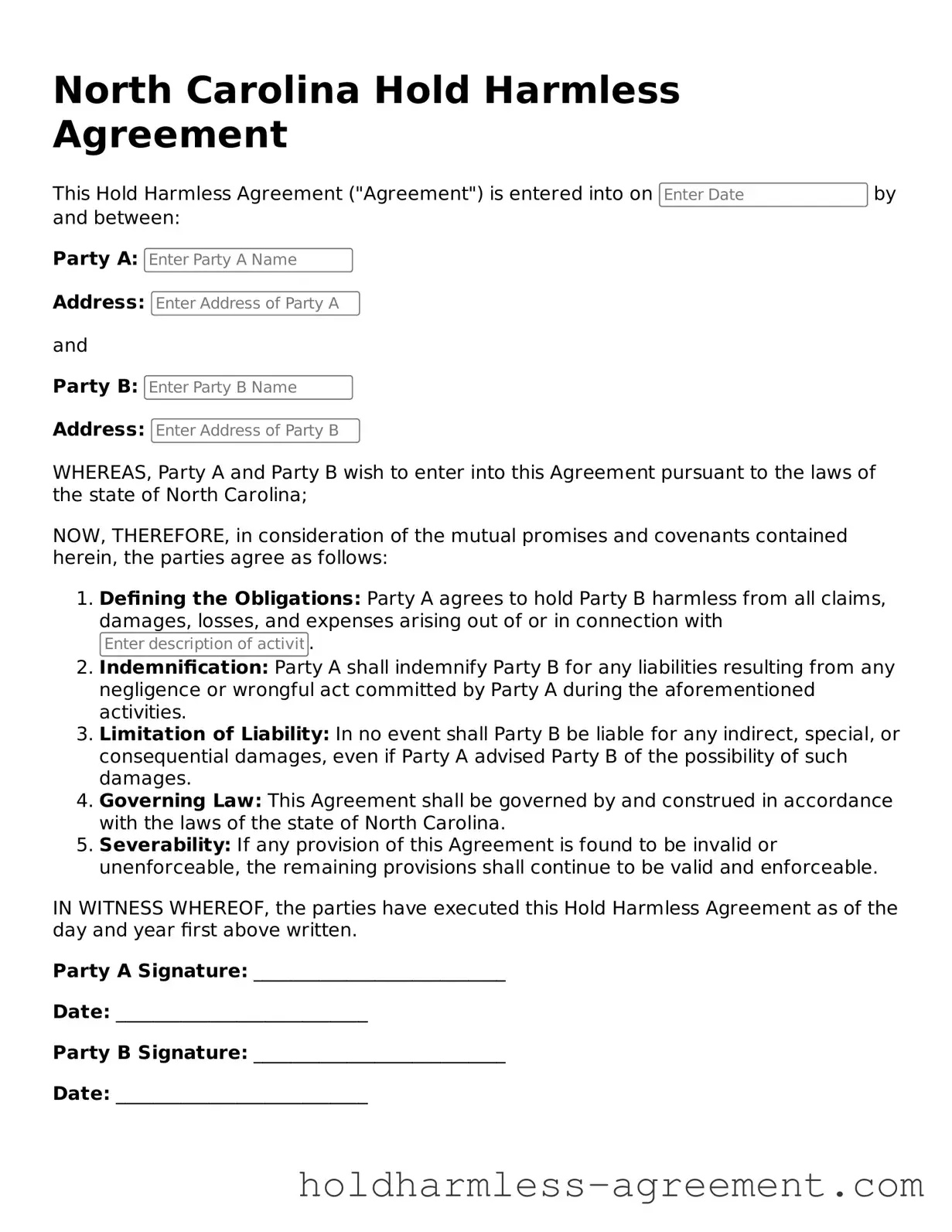When filling out a North Carolina Hold Harmless Agreement, individuals often make several common mistakes that can lead to confusion or legal issues down the line. Understanding these pitfalls can help ensure that the agreement serves its intended purpose effectively.
One frequent error is failing to provide complete information. Many people overlook the importance of including all relevant parties involved in the agreement. This includes not only the person or entity being held harmless but also the individual signing the agreement. Incomplete information can render the agreement ineffective.
Another mistake is neglecting to specify the scope of the agreement. It’s crucial to clearly outline what activities or situations the hold harmless clause covers. Vague language can lead to misunderstandings about what is protected, potentially leaving one party exposed to liability.
Many individuals also forget to read the entire document carefully before signing. This oversight can result in agreeing to terms that are not fully understood. Taking the time to read and comprehend each section is vital for ensuring that all parties are on the same page.
Some people mistakenly believe that a verbal agreement suffices. While a Hold Harmless Agreement can be a straightforward document, it must be in writing to be enforceable. Relying on a handshake or verbal assurances can lead to disputes later.
In addition, not consulting with a legal professional can be a significant misstep. While the form may seem simple, legal nuances can affect its enforceability. Seeking advice from someone knowledgeable can provide clarity and help tailor the agreement to specific needs.
Another common error is failing to date the agreement. Without a date, it becomes difficult to determine when the agreement was executed. This can lead to complications if a dispute arises later regarding the timing of the agreement.
People also sometimes overlook the importance of signatures. All parties involved must sign the agreement for it to be valid. Incomplete signatures can lead to questions about the agreement’s legitimacy and enforceability.
Lastly, many individuals do not keep a copy of the signed agreement. After signing, it’s essential to retain a copy for personal records. This ensures that all parties can refer back to the agreement if needed, providing a clear reference point in case of disputes.
